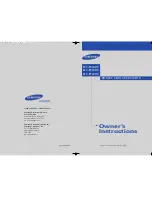
Planning and Installation manual VV600/VV602Plus
12
4.3. Planning a vault protection
As a general rule it is recommended to have one detector on each wall, floor, and
ceiling inside the vault and one detector on, or inside the vault door. The detectors
should be recess mounted with VM602P or surface mounted with the VM600P on
the walls. We recommend to mount them at least about 1,80m high to keep clear
from safes, document cabinets, and customer deposit boxes.
The range is reduced at joints between walls and floor and/or ceiling if the
reinforcement bars are not connected. Joints, severe cracking or doors should be
regarded as insulating and additional detectors shall be applied on both sides of
this irregularity.
As the vault door is regarded to be isolated from the walls by its hinges, it is
recommended to have one detector on or preferably inside the vault door. New
vault doors normally have cable channels inside the hinges to provide easy
connection of the detector to the alarm system.
The detector can also be mounted on the outside of the vault door. This gives a
very efficient protection against torch-cutting and a thermic lance as the vault door
acts like a membrane and picks up the signal even before the attack on the surface
has started. The detector could be surface mounted either fixed directly on the
surface or with the VM600P or VM604P mounting plates or it may be mounted on
the movable plate VM651P.
Be careful when you drill into the vault door, so that you don’t damage the
mechanical protection of the door.
If you are installing the detectors in an existing vault you can protect the walls on
either side of the door with a detector mounted on the door frame.
Layout plan
It is recommended to prepare a plan to define the location of each sensor and other
components of the system. A fold out plan will help in doing this.













































